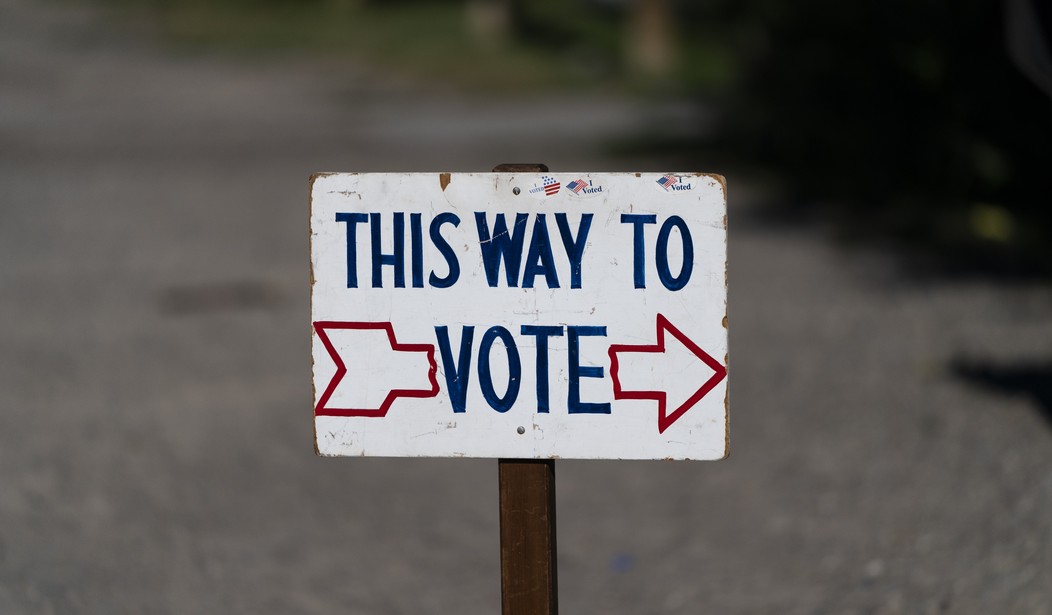A pro-Democrat super PAC, Priorities USA, is taking a new approach to getting out the vote in November. Their target is young voters and they are using ads on social media and streaming services to deliver their message – if you don’t vote, everyone will know about it.
They are calling the tactic social pressure. The ads remind voters that whoever they vote for is secret but whether or not they vote is not. It’s vote shaming them to get them out to vote. The ads appeal to a young voter’s sense of being a part of a community. They are targeting more than 8 million young people newly eligible to vote this year.
“Who you vote for is secret. But whether you decide to cast a vote or not is public,” one ad says. “So keep making your community proud this November.”
Another ad shows a stick figure named Bob, which it uses as an example of someone who failed to maintain an up-to-date registration.
“This is Bob,” it says. “Bob liked posting that he voted in 2020 … But we know he let his voter registration get out of date. Don’t be like Bob.”
The ads are running on Facebook, Instagram, YouTube, Snapchat, streaming music services and connected TV. Priorities USA deputy executive director Aneesa McMillan told Axios that the super PAC has devoted “significant resources” to research and data efforts designed to maximize its effectiveness in Democrat voter turnout. The super PAC plans to spend $30M this cycle on a digital-centric strategy, no traditional television advertising. So far it has spent about $200,000 on the campaign. Voters also receive information on how to check their voter registration status.
Various disclosure data provides more specific information.
Ad disclosure data show the ads are targeting people in specific zip codes in Arizona, Michigan, Nevada, Pennsylvania and Wisconsin, all key midterm battleground states.
The zip codes targeted by the Facebook and Instagram ads include urban centers and areas around large universities, while a number of more rural zip codes are specifically excluded.
Disclosure data on Snapchat shows the ads are aimed at people ages 18-34.
McMillan says that it’s “a light hearted, almost comical way of addressing it.” She said that the research apparatus the PAC has built upon since 2017 makes sure that the targeting and tactics are accurate. That’s probably true. Organizations and campaigns have been mastering the art of micro-targeting voters for years. Elections are won county by county, generally speaking. The ability to drill down and decipher where your voters are is a useful tool for a campaign.
Though McMillan brushes it off as lighted fun, this social pressure thing does have a whiff of personal intrusion, doesn’t it? Taking it further out, if young voters don’t respond to being told that voter records are public, for their friends and neighbors to see, and they still don’t vote, what is next? Doxxing? Will tweets show up shaming specific voters who didn’t turn out in a tightly contested race? What if a candidate loses a race by just a few votes? Public shaming seems like a possible extension of voter shaming in today’s cancel culture world.
Newly eligible voters have the ability to sway the midterm elections, according to Tufts University researchers. Young people are the least reliable voters, though, so they are often overlooked or ignored. The youth vote was up significantly in 2020 so perhaps the trend is changing. They can make a difference in specific races. Youth voters of color may be decisive in key races.
Our rankings highlight the power and potential of young people of color in the 2022 midterms. For example, Arizona and Nevada (which rank in both the Senate and Governor top 10s) feature a large proportion of Latino youth whose participation in 2022 may be decisive, as it already was in the 2020 election.
While Arizona has above average-rates of college enrollment and youth voter registration, Nevada ranks among the lowest in the nation on both indicators, which suggests that reaching and mobilizing young voters may require different strategies in each state. Some of those strategies were successful in 2020; Nevada had above-average youth voter turnout, especially among young people ages 18-19.
The 2022 YESI rankings also include states, like North Carolina (#7 – Senate) and Georgia (#1 – Senate, #5 – Governor) where Black youth may have a decisive influence on elections. In Kansas (#3 – Governor), New Hampshire (#6 – Senate) and Maine (#8 – Governor), engaging rural youth will be especially critical—and an ongoing challenge, as we have chronicled that many rural youth report living in civic deserts.
The diversity of the youth electorate could also shape U.S. House races. In more than half the districts in our top 10, more than 1 in 4 residents are people of color. That includes districts with heavily Latino populations like the Colorado 8th and California 27th, and the substantial Black population in the Virginia 2nd. Campaigns, organizers, and other stakeholders must be thoughtful about strategies and tactics—especially to support those from historically marginalized communities who may disproportionately face barriers to electoral participation.
It’s an interesting approach but will social pressuring work on election day? It may but it may also prove to be taken as a new form of nagging and we all know what happens when someone feels nagged, right? At least in our house, it always turned the nagged person off. Get out the vote for younger, new voters will likely have to be an organic thing. Candidates themselves are going to have to inspire people to show up to vote the old-fashioned way. It may depend on if younger voters are inspired and eager to vote or if they view it as just another chore to do.








Join the conversation as a VIP Member